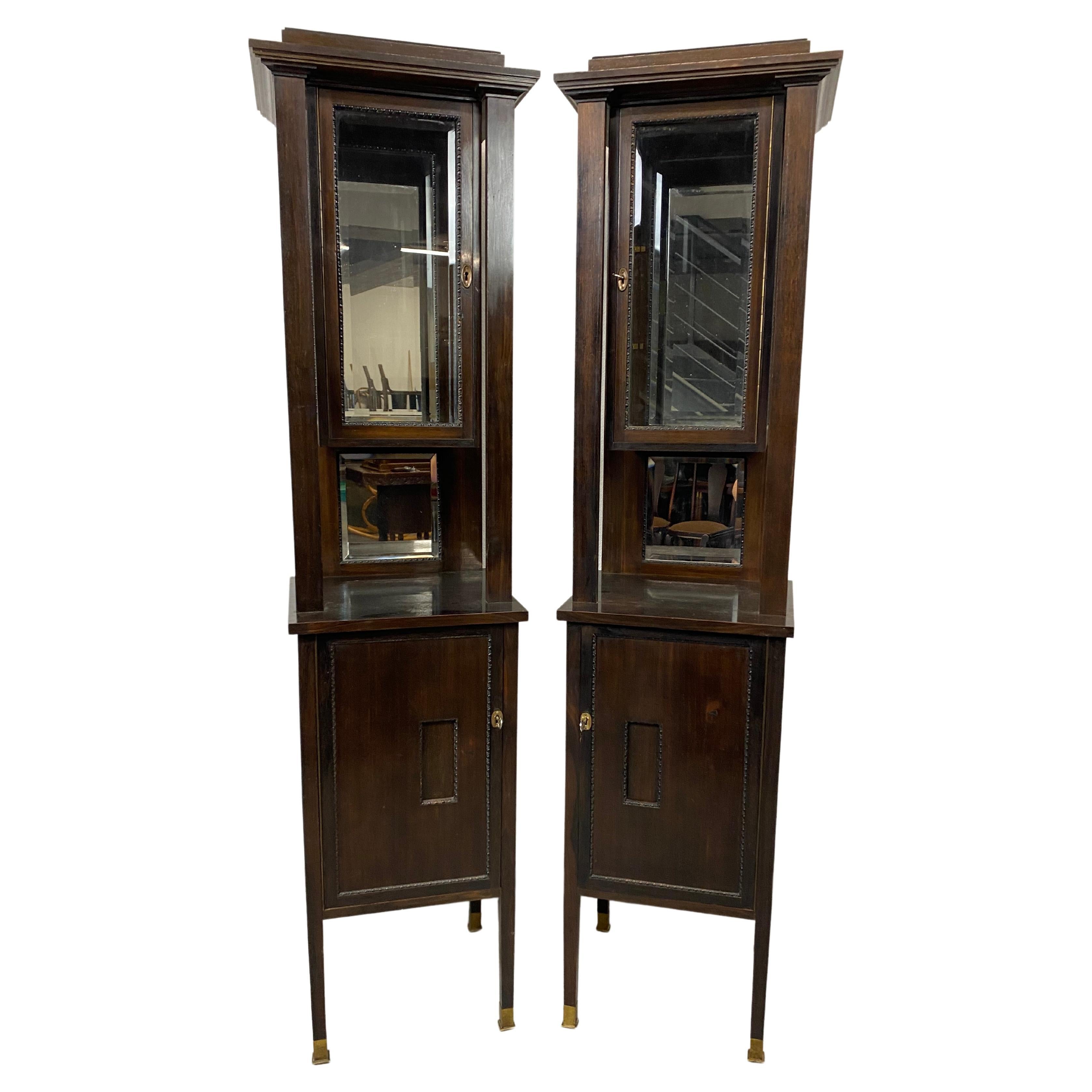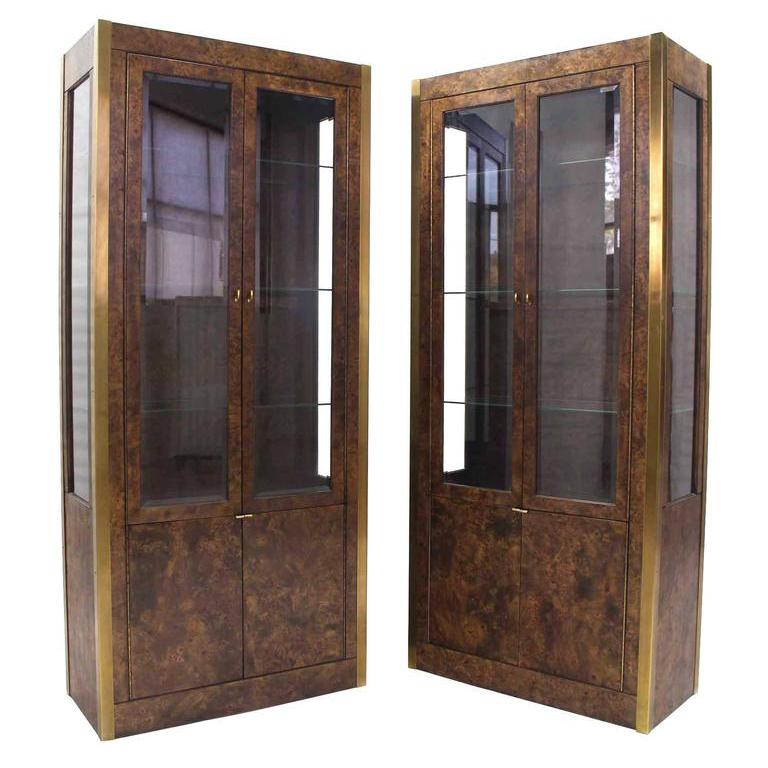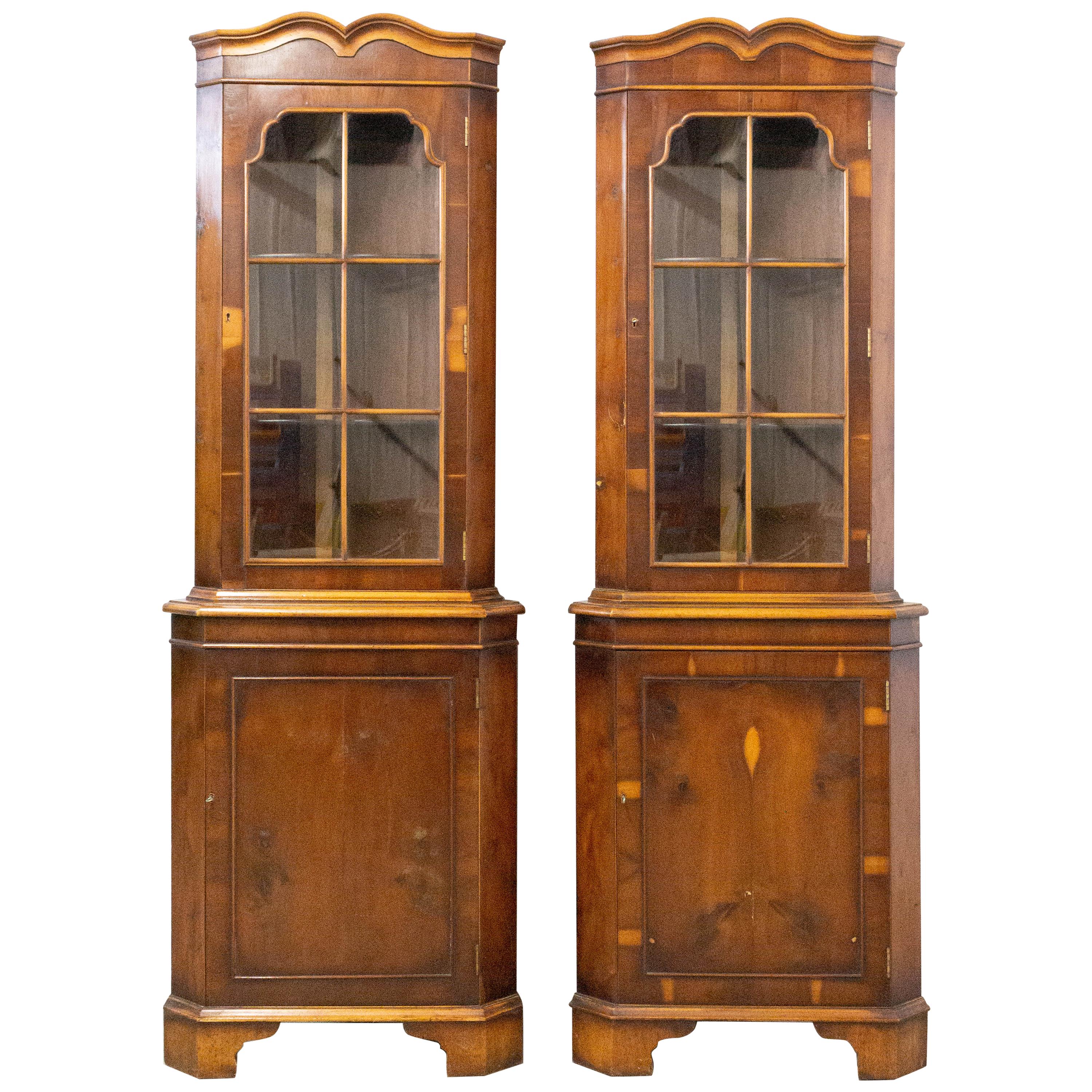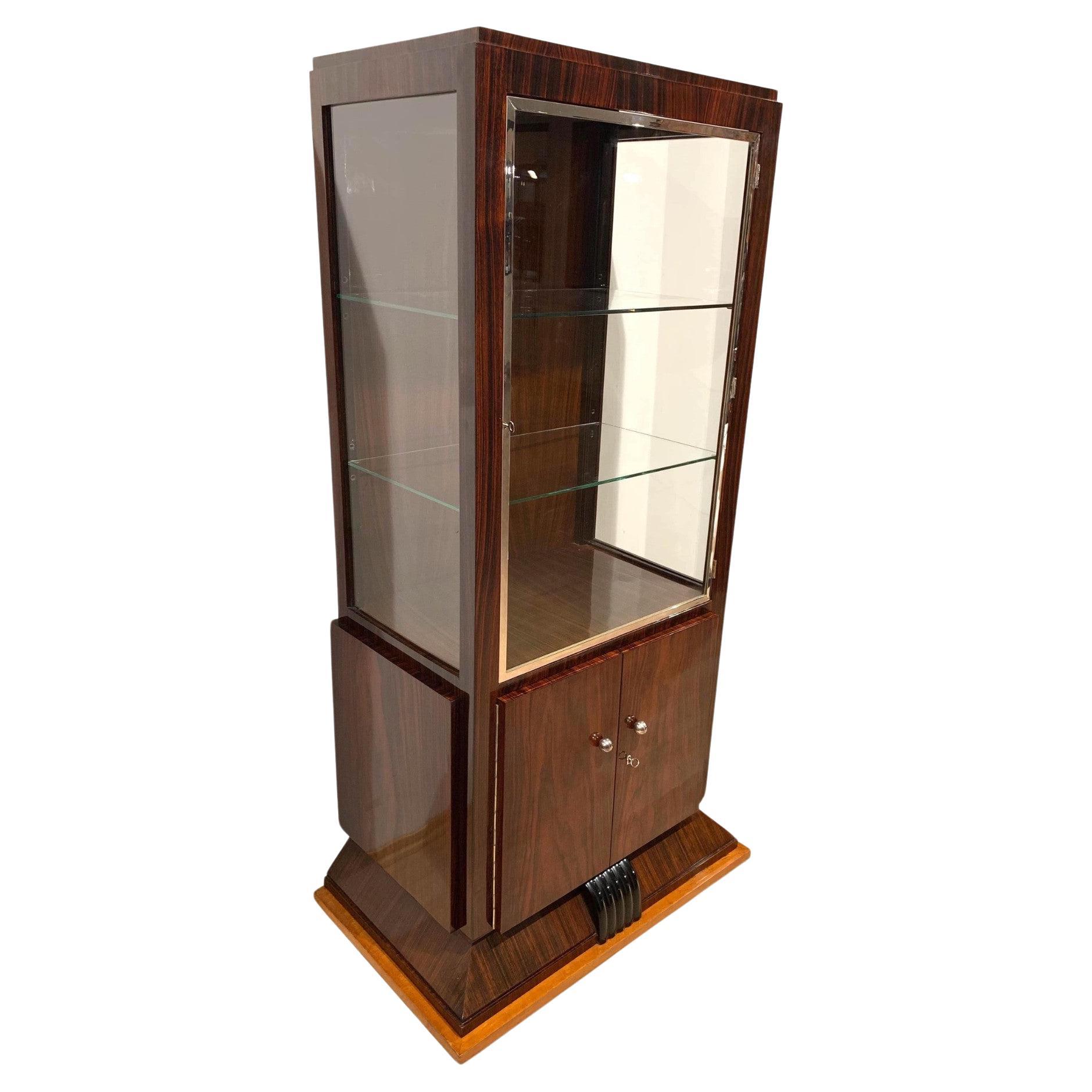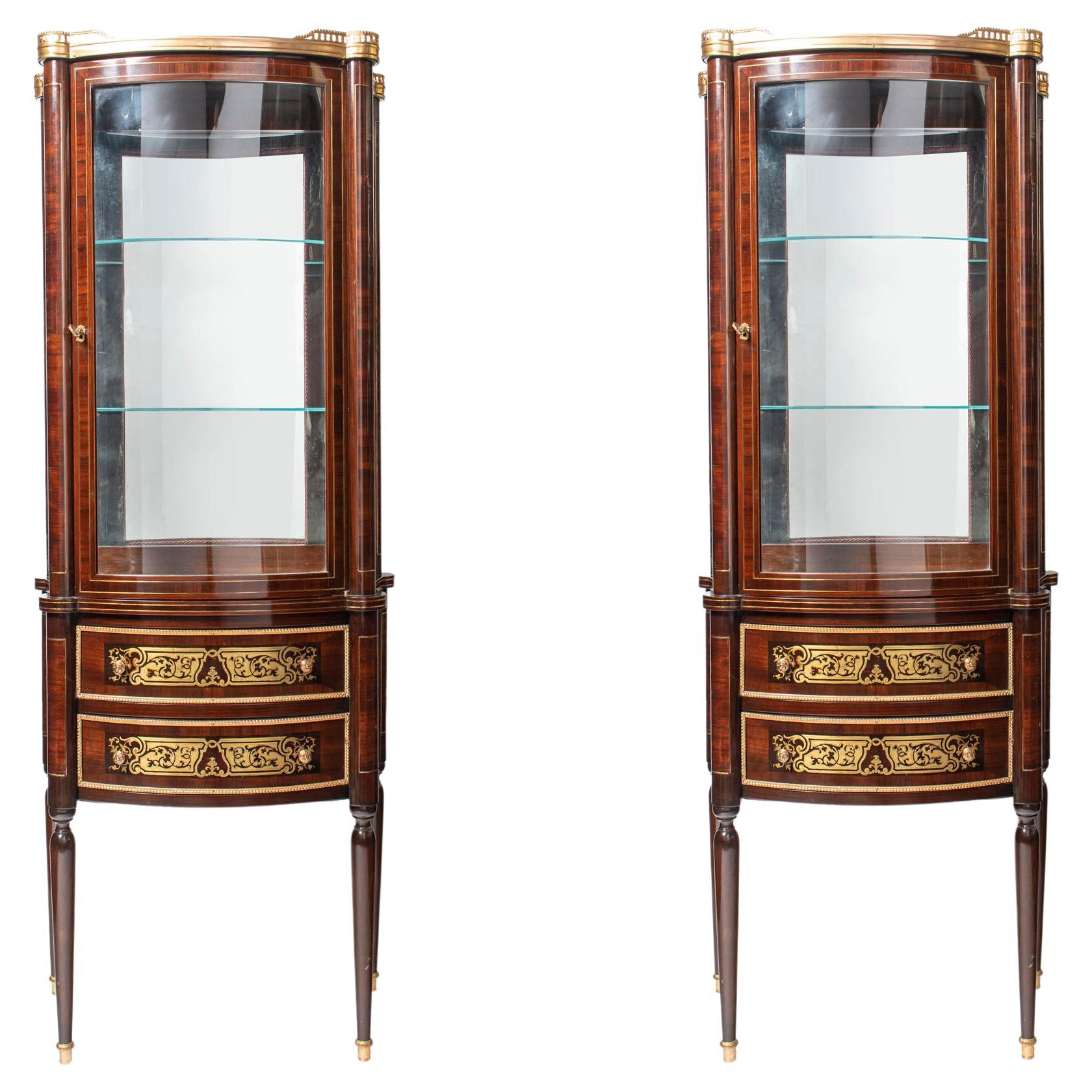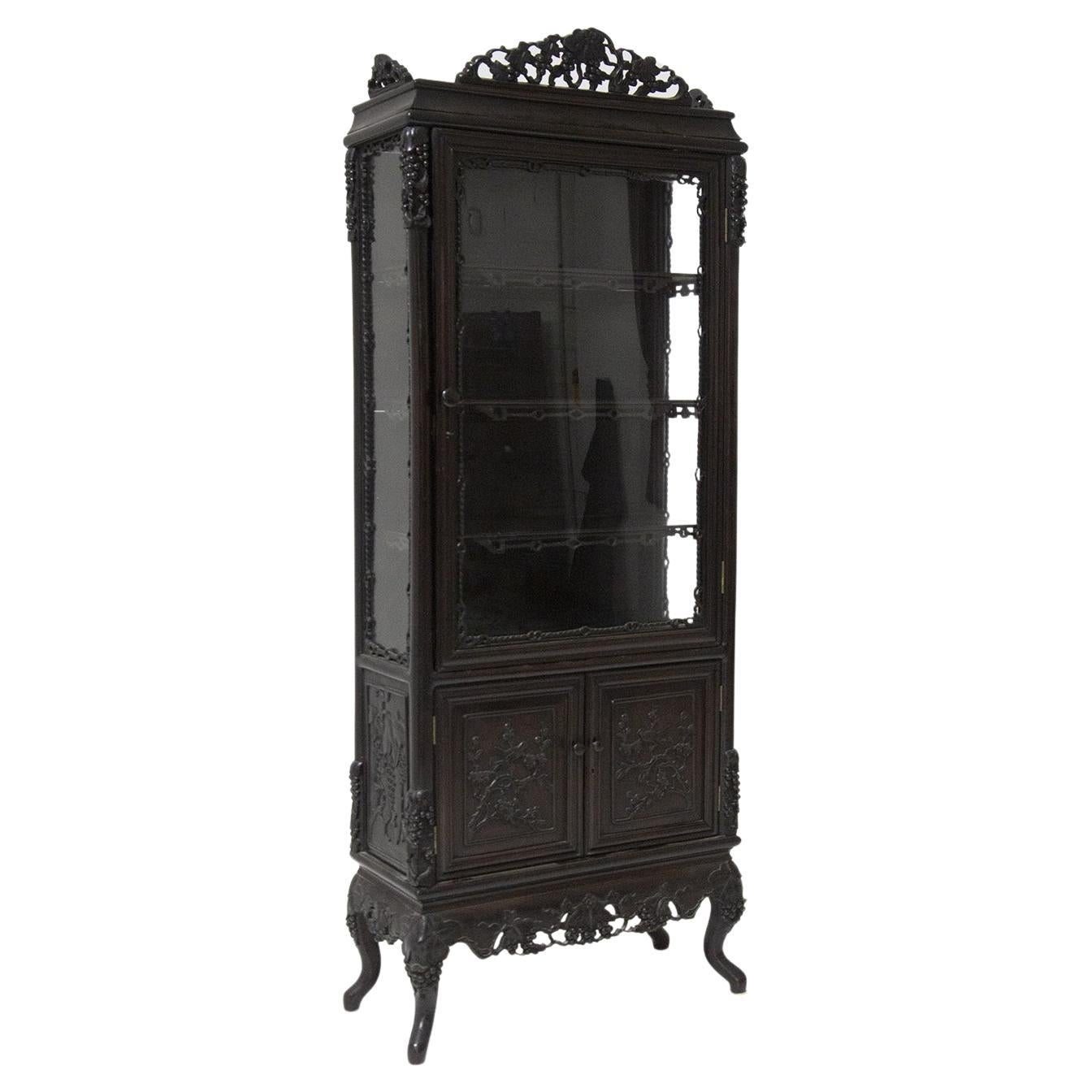Items Similar to Pair of Showcases Bruno Paul Austrian Jugendstil Wood Walnut Maple, circa 1905
Want more images or videos?
Request additional images or videos from the seller
1 of 12
Pair of Showcases Bruno Paul Austrian Jugendstil Wood Walnut Maple, circa 1905
About the Item
Pair of showcases design attributed to Bruno Paul manufactured by Vereinigte Werkstatten fur Kunst im Handwerk Munchen walnut maple glass silver coral beads Austrian Jugendstil ca. 1905
Bruno Paul attended the Art Academy in Dresden from 1892 to 1894 on the initiative of his father. In 1897, Bruno Paul founded the Vereinigte Werkstätten für Kunst im Handwerk Munich together with Richard Riemerschmid and other colleagues. During this time, he worked in parallel as a caricaturist for the “Simplicissimus” magazine and designed furniture as well as entire room interiors. In 1907, he co-founded the “Deutscher Werkbund” and in 1910 he was appointed to the management of the German section of the World Exhibition in Brussels. From 1924 on, he was the director of what is now the University of Arts in Berlin. His work and creativity influenced other famous architects such as Ludwig Mies van der Rohe, George Grosz and Adolf Meyer. He was considered the house architect of Norddeutscher Lloyd and was honored with a Grand Prix at the 1904 World Exhibition in St. Louis. Some of his buildings are now listed monuments.
The unusual shape of the two showcases immediately catches the eye. Bruno Paul used the shape of the diamond in several projects. This geometric figure is at the heart of many of his ornaments, especially when it comes to his furniture designs. At the German Arts and Crafts Exhibition in Dresden in 1906, Paul presented a dining room in where the diamond ornament was ubiquitous. The distinctive base of the showcases can be found again in 1904 at the exhibition of the Deutscher Künstlerbund in Munich. Two small pillar shelf units with bronzes by Franz von Stuck feature the same design in the upper section. At the same exhibition, the base of a cabinet bears the same square elements, as well as a pearl border at the top, similar to the one on our pair of vases. The woods used, maple and walnut, also suggest an authorship by Bruno Paul.
The two vitrines were conceived as a display space for art objects. The shelves offer space for three art objects each and the showcases were designed so that they can stand freely in the room. Thus, both the front and the back of the showcases are presentable. Additionally, there is small compartment in the base. The execution was probably done by the Vereinigte Werkstätten in Munich. The fittings in the front are made of silver with small coral applications. The main body of the vitrine, which rests on two massive walnut wood spheres, is particularly refined. As a whole, the two display cases form a successful composition by Bruno Paul from around 1905.
- Creator:Vereinigte Werkstätten München (Manufacturer)
- Attributed to:Bruno Paul (Designer)
- Dimensions:Height: 72.05 in (183 cm)Width: 18.51 in (47 cm)Depth: 14.18 in (36 cm)
- Sold As:Set of 2
- Style:Jugendstil (Of the Period)
- Materials and Techniques:
- Place of Origin:
- Period:1900-1909
- Date of Manufacture:circa 1905
- Condition:Wear consistent with age and use.
- Seller Location:Klosterneuburg, AT
- Reference Number:1stDibs: LU5830226460652
About the Seller
5.0
Vetted Seller
These experienced sellers undergo a comprehensive evaluation by our team of in-house experts.
Established in 2013
1stDibs seller since 2021
13 sales on 1stDibs
Typical response time: <1 hour
- ShippingRetrieving quote...Ships From: Klosterneuburg, Austria
- Return PolicyA return for this item may be initiated within 14 days of delivery.
More From This SellerView All
- Austrian Jugendstil Bronze Vase Gustav Gurschner circa 1905 Silver PlatedBy K.K. Kunst-Erzgiesserei Wien, Gustave GurschnerLocated in Klosterneuburg, ATAustrian Jugendstil Patinated and Silver-Plated Bronze Vase designed by Gustav Gurschner manufactured by K.K. Kunst-Erzgiesserei circa 1905 Signed Gustav Gurschner is among the m...Category
Antique Early 1900s Austrian Jugendstil Vases
MaterialsBronze
- Austrian Jugendstil Bronze Vase Gustav Gurschner circa 1905 Oakleaf DecorationBy K.K. Kunst-Erzgiesserei Wien, Gustave GurschnerLocated in Klosterneuburg, ATAustrian Jugendstil Bronze Vase designed by Gustav Gurschner executed by K.K. Kunst-Erzgießerei circa 1905 Oakleaf garland Tyrolean-born Gustav Gurschner was one of the most famou...Category
Antique Early 1900s Austrian Jugendstil Vases
MaterialsBronze
- Glass Centerpiece Loetz Austrian Jugendstil, circa 1900By Loetz GlassLocated in Klosterneuburg, ATAustrian Jugendstil glass centerpiece with six openings, Johann Loetz Witwe circa 1900 Phenomen Genre 358 decoration This glass centerpieces is an extraordinary example of the Loe...Category
Early 20th Century Austrian Jugendstil Glass
MaterialsGlass
- Wooden Statuette of a Lady Werkstatte Hagenauer Austrian Jugendstil, circa 1940By Werkstätte Hagenauer WienLocated in Klosterneuburg, ATWooden statuette of a lady Werkstatte Hagenauer Wien brass Plinth Austrian Jugendstil 1940s marked At the end of the 30s female forms were being worked into items like mirrors or ...Category
Vintage 1940s Austrian Jugendstil Figurative Sculptures
MaterialsBrass
- Bronze Vase Gustav Gurschner circa 1910 Austrian JugendstilBy K.K. Kunst-Erzgiesserei Wien, Gustave GurschnerLocated in Klosterneuburg, ATBronze vase with cross relief designed by Gustav Gurschner manufactured by K.K. Kunst-Erzgiesserei Wien ca. 1910 Austrian Jugendstil signed Gust...Category
Vintage 1910s Austrian Jugendstil Vases
MaterialsBronze
- Bronze Sculpture Gustav Gurschner circa 1904 Patinated Austrian JugendstilBy K.K. Kunst-Erzgiesserei Wien, Gustave GurschnerLocated in Klosterneuburg, ATAustrian Jugendstil Patinated Bronze Sculpture designed by Gustav Gurschner manufactured by K.K. Kunst-Erzgiesserei circa 1904 Signed Gustav Gurschner is among the most famous Aust...Category
Antique Early 1900s Austrian Jugendstil Figurative Sculptures
MaterialsBronze
You May Also Like
- Jugendstil Vitrines in Style of Adolf LoosBy Adolf LoosLocated in Banská Štiavnica, SKPair of jugendstil vitrines in style of Adolf Loos in original condition with slight signs of usage. Brass leg endings.Category
Vintage 1910s German Jugendstil Vitrines
MaterialsGlass, Wood
- Pair of Burl Wood, Brass and Glass Showcase Curio CabinetsBy TomlinsonLocated in Dallas, TXPair of china vitrine cabinets by Tomlinson are an excellent example of their timeless quality and design. This rectangular top cabinet features two doors with glass panels and brass...Category
20th Century American Mid-Century Modern Vitrines
MaterialsBrass
- Pair of Corner Vitrines French Midcentury Yew Wood Showcase CabinetsLocated in Labrit, LandesPair of yew wood showcase cabinets corner vitrines French midcentury, circa 1960 Measure of the fassade: 25.6 in. (65 cm) Good condition with some mar...Category
Mid-20th Century French Mid-Century Modern Vitrines
MaterialsGlass, Wood
- Art Deco Vitrine Showcase, Three Sides Glass, Rosewood/Maple, France, circa 1925Located in Regensburg, DEElegant straight-lined, Art Deco period Vitrine or Showcase with three sides glass from France about 1925. Rosewood / Palisander veneered on the in- and outside. Base in maple soli...Category
Vintage 1920s French Art Deco Vitrines
MaterialsChrome
- Pair of Wood, Bronze and Glass Showcases Vitrines, France, Late 19th CenturyLocated in Buenos Aires, Buenos AiresPair of wood, bronze and glass showcases vitrines. France, late 19th century.Category
Antique Late 19th Century French Napoleon III Vitrines
MaterialsBronze
- Chinese Antique Colonial Showcase in Fine WoodLocated in Milano, ITGorgeous antique showcase of fine French manufacture, created for English colonists, belonging to the 1800s. This stunning display case is made entirely of a very fine dark wood, fabulously crafted and embellished. There are 4 feet to support the structure, S-shaped in fine wood, black in color, very durable. The feet are decorated with simply fantastic wooden spheres. Above we see a rectangular frame decorated like a frieze, with various squiggles and wooden spheres that go to create bunches of grapes, which give a really beautiful and scenic effect. Going up we see two window opening doors, very beautiful, with spherical wooden handles. The decorations are located in the center of the rectangle of the sash: the subject is a flowering tree branch with a sweet little bird perched on it, supreme nature prevails. Going up further rises the showcase proper, again framed by the wood used for the base. There is a central handle at the left side, which helps to open the one window sash...Category
Antique Early 19th Century Chinese Mid-Century Modern Cabinets
MaterialsGlass, Wood
Recently Viewed
View AllMore Ways To Browse
Antique Designs Furniture
Antique Design Furniture
Showcase Display Used
Wood Showcase
Showcase Pair
Square Wood Pieces
Pair Of Showcase
Shape Of Austria
Small Storage Pair
Display Showcase
Bronze Showcase
Antique Display Showcase
Antique Maple Cabinet
Antique Maple Cabinets
Antique Display Showcases
Wood Sphere
German Arts And Crafts
Antique Showcase Cabinet
